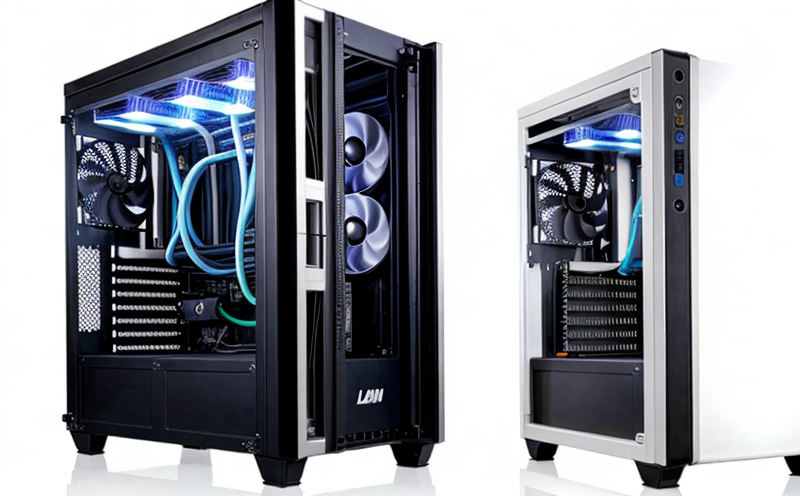BS EN 13779 Indoor Air Performance Test
The BS EN 13779 standard provides a framework for testing and certifying HVAC (Heating, Ventilation, and Air Conditioning) equipment based on its indoor air performance. This test is crucial in ensuring that the equipment meets stringent air quality requirements set forth by international standards. Indoor air quality significantly impacts human health; thus, accurate measurement of pollutants such as particulate matter, volatile organic compounds (VOCs), carbon dioxide (CO2), and other contaminants is paramount.
The testing process under BS EN 13779 involves several stages, each designed to comprehensively evaluate the equipment's performance in real-world conditions. Specimen preparation typically includes setting up a controlled environment that simulates typical indoor scenarios, including temperature, humidity levels, air flow rates, and contaminant concentrations. The instrumentation used for these tests is calibrated according to ISO 17025 standards to ensure reliability.
One of the key aspects of this test is the measurement of air filtration efficiency. This involves assessing how effectively the HVAC system can remove airborne particles from the indoor environment. Filtration rates are typically measured in microns, and higher values indicate better performance. Additionally, the test evaluates the equipment's ability to maintain a balanced indoor climate by monitoring CO2 levels, which is essential for occupant comfort and health.
Another critical component of the BS EN 13779 test is the evaluation of air flow distribution within the space being tested. Uneven airflow can lead to hot spots or cold spots, compromising both energy efficiency and occupant comfort. The testing apparatus used here includes pressure sensors placed at various points in the ductwork to measure static pressure and ensure uniform distribution.
The acceptance criteria for this test are stringent, with specific limits set for particulate matter (PM2.5 and PM10), VOCs, CO2 levels, and air flow rates. Compliance with these standards not only ensures high indoor air quality but also helps HVAC manufacturers meet regulatory requirements in different countries around the world.
For R&D engineers working on new HVAC designs, this test offers valuable insights into how their innovations perform under real-world conditions. By identifying areas for improvement early in development cycles, companies can enhance product quality and reduce costs associated with post-production modifications. Similarly, procurement teams benefit from knowing that equipment they purchase meets these rigorous standards right out of the box.
The importance of this test cannot be overstated given its role in enhancing indoor air quality across various sectors such as residential homes, commercial buildings, schools, hospitals, and offices. Improved IAQ contributes to reduced sick building syndrome cases, lower healthcare costs due to respiratory issues, increased worker productivity, better overall health outcomes, and a more sustainable environment.
Given the complexity involved in conducting this test correctly, it is advisable for organizations to partner with accredited laboratories that have expertise in HVAC testing. These labs possess state-of-the-art facilities equipped with advanced instrumentation capable of capturing detailed data points throughout each stage of the testing process. Their experienced staff can guide clients through every aspect of the procedure, from initial consultation to final report generation.
By adhering strictly to BS EN 13779 guidelines during equipment design and manufacturing stages, manufacturers demonstrate their commitment to producing high-quality products that contribute positively towards healthier living environments worldwide.
Why It Matters
The quality of indoor air has a direct impact on the well-being of occupants. Poor IAQ can lead to various health problems including allergies, asthma exacerbations, headaches, fatigue, and even long-term illnesses like chronic obstructive pulmonary disease (COPD) or lung cancer. Ensuring that HVAC systems operate efficiently according to international standards such as BS EN 13779 is crucial in maintaining optimal indoor environments.
From a business perspective, investing in proper testing ensures compliance with local regulations and enhances brand reputation by promoting healthier workspaces for employees. It also helps attract environmentally conscious consumers who prefer products that contribute positively towards sustainability goals.
In terms of operational efficiency, compliant HVAC systems consume less energy while still delivering the desired level of comfort and air quality. This translates into cost savings through reduced utility bills and extended equipment lifespan due to fewer breakdowns or malfunctions caused by suboptimal performance.
Why Choose This Test
Selecting the BS EN 13779 Indoor Air Performance Test for your HVAC equipment is a strategic decision that offers numerous advantages. Firstly, it provides comprehensive evaluation covering multiple parameters including filtration efficiency, CO2 levels, and air flow distribution. Secondly, by meeting these stringent standards, you ensure long-term reliability and durability of your products. Thirdly, adherence to international norms enhances market access opportunities as many countries require compliance with specific testing protocols.
Moreover, choosing this test demonstrates your commitment to producing eco-friendly solutions which align well with current trends towards sustainable development practices. Lastly, it allows for benchmarking against competitors ensuring competitive advantage in terms of product quality and innovation.
Customer Impact and Satisfaction
Implementing BS EN 13779 compliant HVAC systems directly impacts customers by providing them with healthier living or working environments. Cleaner air improves respiratory health leading to fewer sick days for occupants resulting in higher productivity levels among employees.
Furthermore, satisfied clients are more likely to recommend your products/services which fosters positive word-of-mouth marketing. This can lead to increased sales and customer loyalty enhancing overall business performance.





